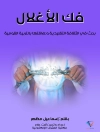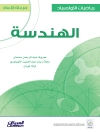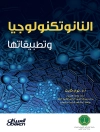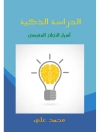A synthesis of nearly 2, 000 articles to help make engineers
better educators
While a significant body of knowledge has evolved in the field
of engineering education over the years, much of the published
information has been restricted to scholarly journals and has not
found a broad audience. This publication rectifies that situation
by reviewing the findings of nearly 2, 000 scholarly articles to
help engineers become better educators, devise more effective
curricula, and be more effective leaders and advocates in
curriculum and research development.
The author’s first objective is to provide an illustrative
review of research and development in engineering education since
1960. His second objective is, with the examples given, to
encourage the practice of classroom assessment and research, and
his third objective is to promote the idea of curriculum
leadership.
The publication is divided into four main parts:
* Part I demonstrates how the underpinnings of
education–history, philosophy, psychology,
sociology–determine the aims and objectives of the curriculum
and the curriculum’s internal structure, which integrates
assessment, content, teaching, and learning
* Part II focuses on the curriculum itself, considering such key
issues as content organization, trends, and change. A chapter on
interdisciplinary and integrated study and a chapter on project and
problem-based models of curriculum are included
* Part III examines problem solving, creativity, and design
* Part IV delves into teaching, assessment, and evaluation,
beginning with a chapter on the lecture, cooperative learning, and
teamwork
The book ends with a brief, insightful forecast of the future of
engineering education. Because this is a practical tool and
reference for engineers, each chapter is self-contained and may be
read independently of the others.
Unlike other works in engineering education, which are generally
intended for educational researchers, this publication is written
not only for researchers in the field of engineering education, but
also for all engineers who teach. All readers acquire a host of
practical skills and knowledge in the fields of learning,
philosophy, sociology, and history as they specifically apply to
the process of engineering curriculum improvement and
evaluation.
Зміст
Part I. Aims and Objectives (Outcomes) and Their Screening 1
Chapter 1. Curriculum Design, Implementation and Evaluation 3
Chapter 2. Aims and Objectives (Outcomes) 19
Chapter 3. Philosophy and Sociology and the Aims of the Engineering Curriculum 53
Chapters 4. Concepts and Principles (Rules) 91
Chapter 5. Learning Strategies and Learning Styles 119
Chapter 6. Human Development 153
Part II. The Curriculum and Its Paradigms in Practice 175
Chapter 7. Curriculum Change and Changing the Curriculum 177
Chapter 8. Interdisciplinary and Integrated Studies 199
Chapter 9. From Projects to Problem-Based Learning 221
Part III. Problem Solving, Creativity, and Design 241
Chapter 10. Problem Solving 243
Chapter 11. Creativity 261
Chapter 12. Design 283
Part IV. Introduction to Chapters 13 and 14. The Lecture 317
Chapter 13. Cooperative Learning and Teamwork 321
Chapter 14. Other Instructional Practices and the New Technologies 353
Chapter 15. Assessment and Evaluation 391
Chapter 16. The Formal Assessment of Student Learning: Alternative Assessment 417
Chapter 17. Attrition and Retention 443
Epilogue 459
Author Index 465
Subject Index 483
Про автора
JOHN HEYWOOD, is a Professorial Fellow Emeritus of Trinity College Dublin. He has an MSc in Engineering Education, and a doctorate from the University of Dublin. He was founding editor of the International Journal of Technology and Design Education. He has published widely and won several awards for his writings in the areas of engineering, science, and technology. Since 1973 he has been a regular contributor to the ASEE/IEEE Frontiers in Education Conference.












